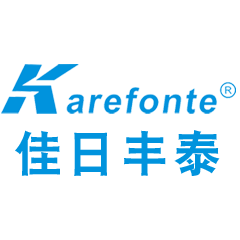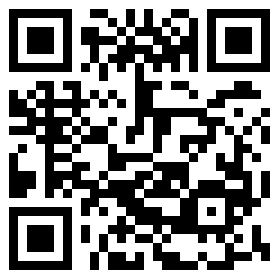- Customer Hotline
- 86-755-29304991
- +86 19896871990
- 86-755-29304991
- +86-755-22140591
- sales@jrftim.com
- 4/F, Bldg.6, No.168 Changshan Industrial Zone, Pingdi Street, Longgang District , Shenzhen, China.
Electromagnetic compatibility (EMC) commonly used materials - Electromagnetic shielding absorbing material
Time:2017-11-06
Electromagnetic shielding is the use of shielding material to block or attenuate the shielded area and outside the electromagnetic energy transmission. The principle of electromagnetic shielding is to use the shielding body to reflect, absorb and guide the electromagnetic energy flow, which is closely related to the charge, current and polarization induced on the surface of the shielding structure and the shielding body. Shielding according to its principle is divided into electric field shielding (electrostatic shielding and alternating electric field shielding), magnetic shielding (low frequency magnetic field and high frequency magnetic field shielding) and electromagnetic shielding (electromagnetic shielding). The so-called electromagnetic shielding refers to the latter, that is, the electric field and the magnetic field are shielded at the same time.
Shielding effect is good or bad with shielding effect ~ g (SE, Shielding effectiveness) to evaluate, it shows the shielding of the attenuation of electromagnetic waves. The shielding effectiveness is defined as the ratio of the electromagnetic field intensity before and after shielding, ie SE = 2OIg (Eo / Es) or SH = 2Olg (HdHs), where the electric field intensity and the magnetic field intensity at this point before shielding are The point of electric field strength and magnetic field strength. The evaluation of the shielding effectiveness is based on the size of the shielding effectiveness.
According to the principle of shielding effect, the shield's contribution to the shielding effectiveness is divided into three parts:
(1) the reflection loss caused by the impedance mismatch on the shield surface;
(2) When the electromagnetic wave is transmitted inside the shielding material, electromagnetic energy is absorbed to cause transmission loss or absorption loss;
(3) multiple reflection loss caused by multiple reflection of the electromagnetic wave between the inner walls of the shielding material. Thus, three basic factors that affect the shielding effectiveness of the material, namely, the conductivity, the permeability and the thickness of the material, can be obtained. This is also the shielding material research itself must pay attention to the problems and breakthroughs. Of course, for the electromagnetic shielding structure, its shielding effectiveness is also related to the structure, shape, airtightness and the like. For specific problems, the electromagnetic wave frequency to be shielded and the nature of the field source need to be considered.
Common shielding materials
Electro-shielding refers to the shielding of the electric field (E-field), which usually has more types of shielding materials, as follows:
First, the conductive elastomer lining (conductive rubber)
Each conductive rubber is made of silicone, silicone fluoride, EPDM or fluorocarbon-silicon fluoride and other adhesives and silver, silver-plated copper, silver-plated aluminum, silver plated nickel, silver plated glass, silver Lead or carbon particles and other conductive filler composition.
As these materials contain silver, the packaging and storage conditions should be similar to those of other silver-containing components and they should be stored in plastic sheets, such as polyester or polyethylene, away from sulfur-containing materials. The standard shapes are: solid O-shaped strip, hollow O-shaped strip, solid D-shaped strip, hollow D-shaped strip, U-shaped strip, rectangular strip, hollow rectangular strip, hollow P-shaped strip, channel strip and molded conductive rubber molding, Molded D-ring / O-ring, various flanges, I / O gaskets.
Features: Up to 90 dB-120dB over the 20M-20GHz range, even up to 120dB for pure silver particles. Can play the role of shielding and environmental sealing, easy installation, suitable for communications, medical, military, aviation and other occasions.
Second, EMI conductive foam lining
Conductive foam is made by wrapping a conductive braid around a foam core made of polyurethane or EPDM. The conductive braid is usually made of silver-plated nickel nylon, aluminum foil or Monel wire (nickel-copper alloy) Ferrex Copper Clad Steel) composition, good electrical conductivity. Meet the flame retardant grade (UL94-V0), with good flexibility and flexibility and other mechanical properties. Conductive foam pad has a good shielding properties, in the case of radio waves, it will be based on the nature of their objects to reflect, absorb, provide excellent shielding effect. And has a very high price, is the latest, but also the most widely used shielding materials.
Specifications:
The average shielding performance of 90dB
Surface resistance of 0.07? / M2 or more
Operating temperature -40 ~ 70 ° C
Permanent compression set deformation of 3% to 10%, better can do 0% deformation, ten thousand times wear test
Fire UL certification
Features: low pressure, very good shielding effect, shielding performance over 90dB, flexible, light weight, low surface contact resistance, a large choice of cross-section, UL-class fire, you can use conductive PSA fixed.
Third, the metal EMI lining, clamp lining material and hook claw material beryllium copper reed
These include the preparation of screens, the wrapping of screens on elastomeric cores, directional and elastomeric screens in elastomers, which typically provide 60dB-100dB attenuation in the 20MHz-1GHz range. It can be fixed in the tank of the tank by conductive adhesive or by mechanical means.
It can also be embedded in silicone with Monel or Al wire, not only to provide EMI shielding, but also to be used for rainwater, leaks, dust and vent seals in the temperature range of -55 ° C to + 260 ° C.
Clip-on EMI linings are made of carbon-filled silicone strips or Monel filaments on silicone tapes, EMI shields on Ferrex filaments on neoprene, and gland linings on a corrosion resistant stainless steel spring clip for easy installation . No holes or fasteners required.
Beryllium copper reed is a finger reed made of special alloy beryllium copper, which combines the high level EMI shielding effect with the flexible hook and wipe with small closing force. The high-performance parameters of beryllium copper: high tensile strength, good corrosion protection and good electrical conductivity make it an ideal EMI shielding material for use in a wide range of frequencies and can be used in a wide range of electronics with EMI / RFI or ESD issues Equipment. There are bright copper, bright nickel, bright tin different finished products, installed in different metal surfaces, reducing the electrochemical noise between different metals and electrical corrosion.
Spira metal spiral tube, can be used trough installation, metal tube can also be filled with rubber or silicone core.
Fourth, conductive composite
Includes conductive adhesives and conductive coatings. The conductive adhesive is generally made by adding a metal filler such as silver particles or silver plated copper particles to a epoxy resin or silicone or a flexible polyvinyl alcohol by a special process. They have the unique combination of high shear strength, low coefficient of thermal expansion, pure ions, and good thermal and electrical conductivity. Typical applications include bonding EMI shielding channels, windows, or transparent conductive screen films to shielded permanent joints .
Conductive coatings generally sprayed on ABS, Noryl, PVC and other plastic chassis, can provide EMI shielding, anti-static protection, corona shielding and surface grounding, the filler is divided into silver, silver coated copper, copper, nickel, adhesives Usually epoxy resin, polyurethane, etc., the conductivity can reach 0.015 ohm / sq, which can provide 60-80dB shielding for the chassis in the range of 30MHz-1GHz.
Five, absorbing materials
Absorber material is generally mixed with a variety of polymer powder polymer technology, calendered into flexible sheet material, through the hysteresis loss, dielectric loss, resistance loss and other mechanisms into heat, potential energy and other forms of energy, To shield the electromagnetic wave absorption effect.
In addition, other commonly used electromagnetic shielding materials are metal conductive masking tapes, shielded vents, VIP screen air filters, EMI shielding glass windows, shielded optically clear screen films for LED video windows, professional flat cable EMI shielding Set for the ordinary cable shielding screen with silk screen and so on。

